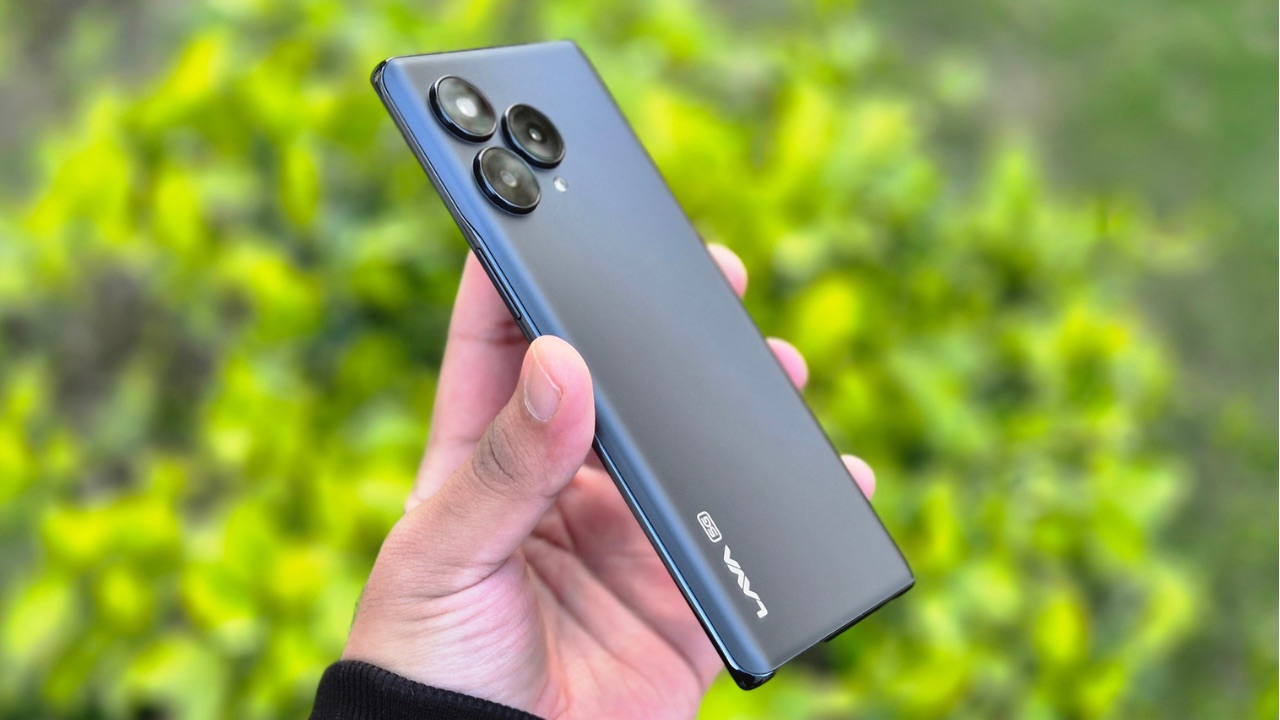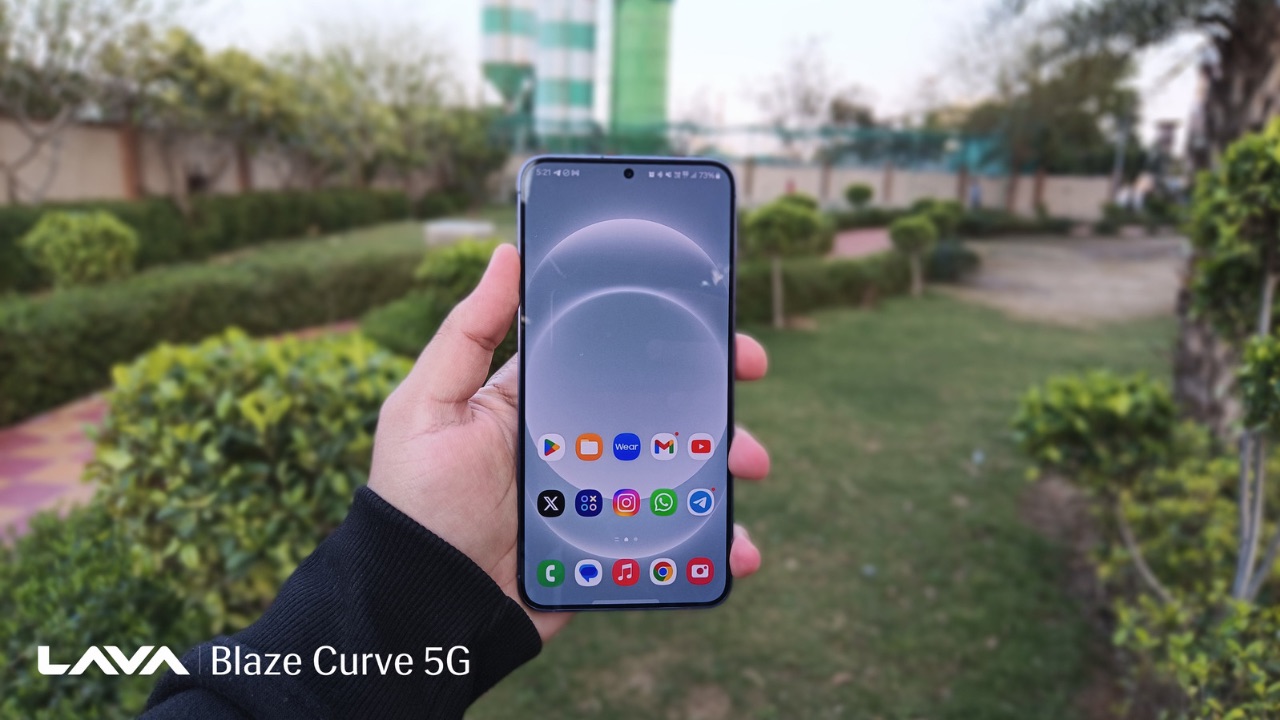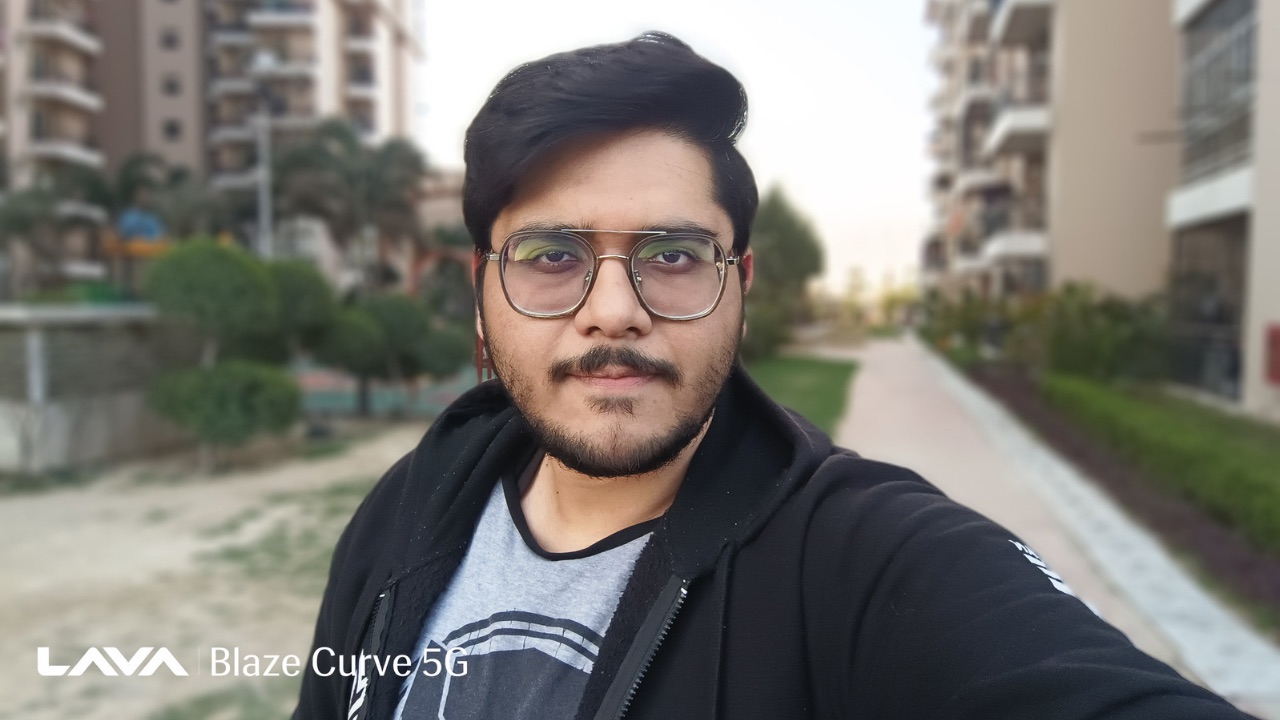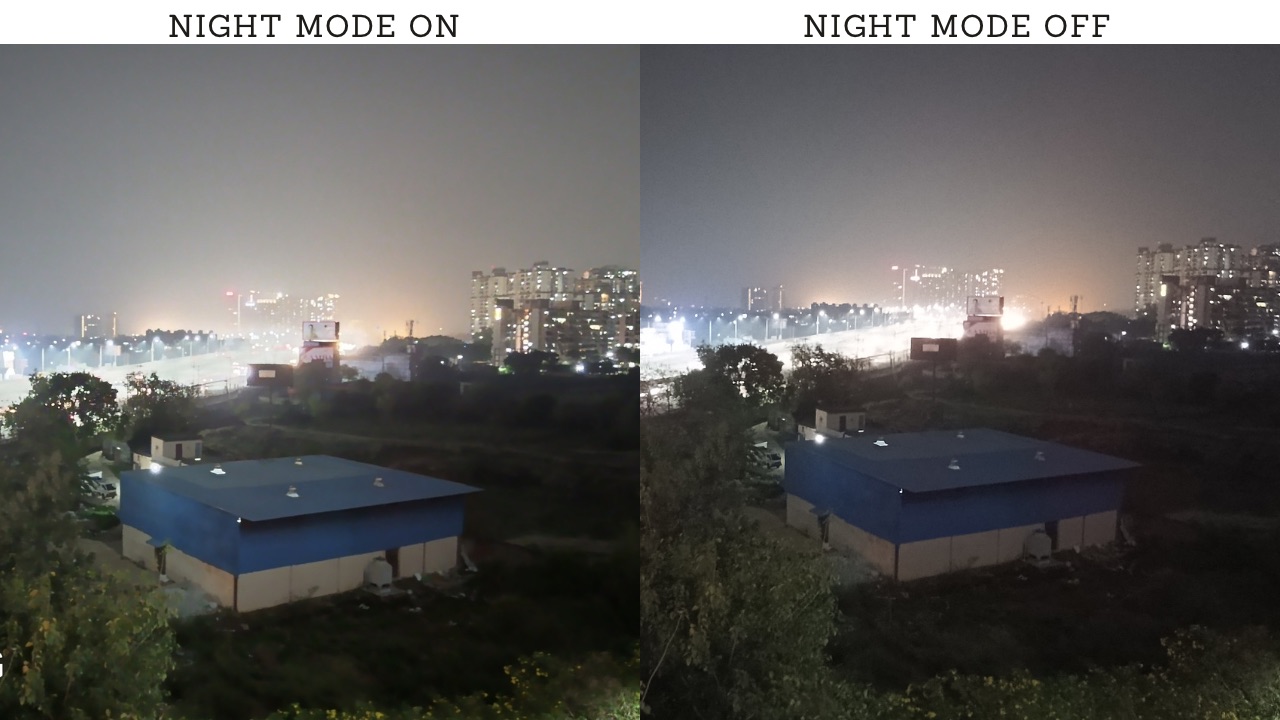Lava has been on a streak of launches in India and most of them have been recommendable for the most part. In an attempt to recreate the same success, the brand launched the Lava Blaze Curve 5G recently and while we were impressed with it in our initial impression, here’s what we think of the handset in a detailed review where we conclude whether we can recommend it at its starting price point of Rs 17,999.
Build & Design

The Lava Blaze Curve 5G has a glass sandwich design with a plastic frame. The glass on both the front and back is curved, and these curves are quite prominent. They not only help with the premium feel in the hand but also make it feel slim and enhance the grip. The device is on the narrower side, so it fits fine in one hand.

The buttons on the right are a little wobbly and we don’t know whether that was an issue with our particular unit, but they were tactile enough when pressed. The frame has a glossy finish and it gets a stereo speaker setup. There’s a speaker grill at the bottom and at the top but the latter is just a placeholder meaning the real speaker isn’t beneath that grill. The reason for this is that the audio originates from the earpiece.

The audio quality from the two speakers is excellent. They also support Dolby Atmos and are adequately loud with reasonable stereo separation and a slight hint of bass. The haptics, on the other hand, are below average, and this is where cost-cutting has been done. While the Agni 2 5G had an X-axis motor, the Blaze Curve 5G gets a rattly low-end motor that doesn’t match the device’s premium feel.

The cameras’ design isn’t the most unique, as they remind you of an iPhone, but because the Sensors are placed separately and not in a single module, they do look appealing. Lava is keeping things minimal with the Blaze Curve 5G, especially in the grey shade we had for review.
While we feel that it’s time Lava should adopt a single design language and play with it slightly in each phone (because that helps with brand identity), we had no issues with the build quality of the Lava Blaze Curve 5G and the way it looks. Overall, the device is impressively built and doesn’t disappoint in this segment.
Display

The Blaze Curve 5G sports a 6.67-inch FHD+ screen with a 120 Hz Refresh Rate, HDR 10+, and Widevine L1 support. While Widevine Support does show up in Netflix, it unfortunately says that HDR capabilities aren’t supported.

Despite that, this is clearly one of the best display panels we have seen in this price range. In terms of colour reproduction, we may go as far as to say that there’s no better panel you can get at this price point than the one you get on Lava Blaze Curve 5G. It’s sharp, has curves, and is impressively vibrant and contrasty.

The viewing angles are quite decent while the brightness level outdoors is acceptable. We would say that’s the only weak link of the display as it could have been brighter but apart from that, this panel doesn’t disappoint in most other areas.
The software also handles Accidental Touch prevention well, while the in-display fingerprint sensor is average in terms of how quickly it reads the print and unlocks the device. While the detection accuracy is good, the unlocking speed can be better.
Software & Performance
The Blaze Curve 5G gets a MediaTek Dimensity 7050 at its helm, paired with 8GB LPDDR5 RAM and up to 256GB of UFS 3.1 storage. It runs on the Android 13 operating system out of the box and will receive two major Android OS upgrades.
Overall performance in day-to-day use has been absolutely fluid during our review period of the Lava Blaze Curve 5G. The animations are well handled except in a few cases, such as the folder opening and closing one or, if you have App lock enabled, the fingerprint pop-up animation that appears when you open a specific app that is locked.
In addition, it delivered a lag-free experience with impressive RAM management. There was no heating involved in daily use. However, the device does struggle with heavier game titles, which is normal for a device in this price range.

We have always criticized Lava for its software. To be precise, we haven’t liked the brand’s approach to the user interface and how inconsistent it looks. However, Lava has now taken all the feedback and improved upon it significantly. The software is now completely Stock Android based on version 13, and Lava has removed its custom settings UI it had earlier.
The shift to stock Android is a welcome move, considering things look way more consistent now and match the rest of the user interface. The lock screen clock looks like it does in Google Pixel devices, and so does the Settings app.

While Lava retains some of its custom features, such as Dura Speed, where the system can put unused apps to sleep, gestures such as three-finger swipe and double tap to wake and sleep, charging animation selection, app lock, and even EDGE lighting, it has also removed some of them, such as the ability to set various clock styles on the lock screen.

There are also various types of Always-on display styles on offer that look decent. Moreover, it only has some of Lava’s own pre-installed apps, and there’s no third-party bloatware, which is great.
As for the issues, the software has improved a lot but still needs more refinement. There is some use of grammar across the user interface which may be confusing at first glance for a new user. Also, for some reason, the device has two Phone apps and none of them can be disabled.

Aside from that, the battery stats page shows wrong stats for some apps. As you can notice in the screenshot above, YouTube was being used for around 13 hours, and background use was less than a minute, which is actually the opposite of what it should show.
Finally, there’s also a bug with the Always-on display that doesn’t turn off when it’s in a dark environment, draining excessive battery. However, these bugs can easily be solved through a software update, and we hope Lava is working on one right now.
Although the device will receive updates until Android 15, we would have loved it even more if it came with Android 14 instead of Android 13 out of the box. The handset’s connectivity performance was fine, and we faced no issues with it.
Battery Backup
A 5000mAh battery with 33W Fast charging backs the Lava Blaze Curve 5G. Once again, the battery life of this Lava handset is excellent. It can easily last a day’s use and can reach the 2-day mark, too, but with less extensive use. With heavy use, you can kill it in a day.
With our use, however, we were ending days with around 40% or 30% left with a screen-on time of around 6 hours, which is quite impressive. Our usage during the review of Lava Blaze Curve 5G included social media browsing, some calling, slight gaming, video streaming and browsing the internet, too. Note that if you enabled AOD, the battery consumption would shoot up heavily, and we feel this needs to be optimised. The device can take up slightly more than an hour to charge from 0 to 100% with the included charger, which is acceptable for its price range.
Cameras

For optics, the Lava Blaze Curve 5G packs a triple rear camera unit. The primary lens is a 64-megapixel Sony IMX686, accompanied by an 8MP ultra-wide angle sensor and a 2MP macro sensor. The front features a 32-megapixel sensor for selfies.


Shots from the main sensor are quite impressive in terms of detailing and sharpness. They do have a slightly more warmer tone than what’s necessary but it’s acceptable for the most part. The colours look vibrant and the dynamic range is average. Overall, it does an improvement over the Agni 2 5G.


Coming to ultra-wide angle photos, there’s a stark difference between shots clicked from the main sensor and the ultra-wide angle sensor, in terms of details and colours. The Wide-Angle shots actually showcase poor quality, with a smudgy effect and some level of noise as well. The colours look slightly faded and the overall tone shifts drastically to the cooler side, therefore, the major colour shift in ultra wide photos compared to those from primary sensor.


The tertiary macro sensor wasn’t needed, but it’s there, and it works. The detailing isn’t the best in macro shots, and so are the colours. Portrait shots, however, have a good amount of natural-looking bokeh effect in the background of the subject but the edge detection could be much better as it does cover up the topic in some scenarios.



Photos taken under artificial lighting also have a decent amount of sharpness, while colours remain more on the natural side. However, as soon as the lighting begins to dip, so does the quality of the photos. Noise begins to creep in, and details and sharpness take a major hit.


Selfies from the front camera are okay at best in terms of skin tone, as it looks faded and is nowhere near the original tone of the human subject. Once again, the detailing is average and similar to edge detection in portrait selfies. As for nighttime photos, as we mentioned, the photos are barely usable even if you turn on the night mode. It does increase brightness level by a slight margin but there’s hardly anything visible in the shot.



